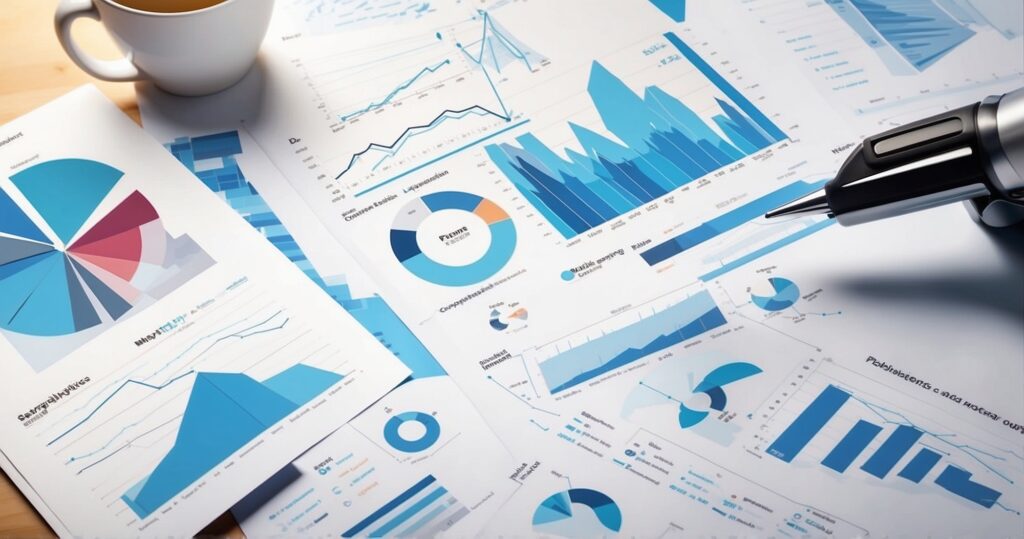Running a small business used to be all about instinct and intuition. You’d just know what customers want. While anecdotal knowledge like this still has value, it’s not enough today. Instead, you need data.
You need data to make evidence-based decisions on which products to sell. Without it, you’ll be stuck in a guessing game that’ll leave you behind your competitors.
That’s the exact situation our customer, a local retail store, experienced. They got out of that problem by using Power BI to transform their store.
This is their story.
The Challenge: Inventory Woes and Missed Opportunities
Our client’s two biggest challenges were inventory management and effective marketing. Their goal was to achieve sustainable growth and maximise customer satisfaction. But, they struggled with maintaining the right inventory and appealing to customers.
That’s because inventory management is complex. It involves maintaining a delicate balance. Your most popular items are the most likely to be sold quickly, which leads to dissatisfied customers.
Conversely, less popular items are more likely to get piled up and unsold, causing financial inefficiency. So, your goal is always to stock enough popular items to satisfy customers and avoid unnecessarily buying less popular items.
This was our store’s biggest inventory management challenge: Forecasting how much inventory to maintain.
At the same time, the store’s marketing strategies didn’t meet their diverse customer base’s needs. Without data-based insights, the store depended on personal intuition and rolled out generic promotions, which wouldn’t connect with audiences.
Predictably, the result was inefficient engagement, low conversion rates, and many missed opportunities. Their marketing was no where near its true potential.
Everything put together, the store needed new inventory management and marketing strategies, both led with a data-driven approach.
Our client achieved exactly this by using Power BI’s data analytics capabilities. They transformed their challenges into opportunities.
Embracing the Data-Driven Approach
Adopting a data-driven approach revolutionised our client’s business. Their leadership recognised they needed to change. So they invested in a data analytics solution powered by Power BI because it’s a user-friendly choice with extensive capabilities.
Embracing Power BI was more than just a technical upgrade for our client. It was a departure from their old inefficient organisational culture to a new one defined by evidence-based decision-making.
Our client instantly gained access to a vast wealth of data, including everything from customer behaviour and demographics to inventory levels through Power BI. And they used this power to make smart decisions.
Our store used the new data it acquired to derive actionable insights and discover meaningful conclusions about its operations. For example, they identified seasonal trends in product sales and built new customer segments.
Power BI empowered them to transform raw data into strategically useful information.
They also benefited from Power BI’s user-friendly nature. Team members across departments used Power BI to visualise data and derive useful insights.
They transformed data analysis from a specialist role into an everyday business activity practised at all levels.
The beauty of this approach is that employees across all levels of the organisation could use data for decision-making. The result is an organisation with evidence-based decision making implanted top to bottom.
Thanks to this new approach, our client went from struggling to thriving in today’s competitive retail market.
Unearthing Hidden Insights with Power BI words
Using Power Bi revealed more to our clients than they initially expected. Their data analytics journey revealed hidden secrets about everything from customer behaviour to market trends and product performance.
With this data in hand, our client dove deep into uncovering every little detail about their organisational landscape. As a result, they identified many areas of improvement that radically elevated their business.
One of these powerful revelations was product seasonality. Our client learned how customer demands changed over a year in different seasons. This granular approach gave them increased precision and helped them understand fluctuations in their sales.
This discovery answered why their sales would decrease at specific times of the year. It also revealed which products they should promote for each season to take advantage of seasonal customer demands.
Another great discovery was about customer demographics. Our customer used Power BI’s robust data analytics to build detailed customer segments. These profiles would be based on factors like age, spending habits, and location.
The store used this information to better understand each segment’s preferences. Specifically, they used this information to tailor marketing strategies for each segment to maximise overall conversion.
Lastly, the most impactful discovery was purchasing patterns. Our client meticulously analysed customer transactional data to discover unexpected connections between different products. They used this information to strategically bundle and cross-sell unrelated products.
This approach allowed them to improve the overall shopping experience, which in turn increased sales and strengthened customer loyalty.
Overall, our store used Power BI as a magnifying glass to better understand every aspect of their business and their customers. They used the information they discovered through Power BI to improve every aspect of their business.
Transforming Operations with Data-Driven Decisions words
Realising what they’ve uncovered, our store launched a campaign to transform their whole business. They fully integrated data analytics for evidence-based decision-making across their organisation with the goal of improving customer experience.
The most important of these transformations was in inventory management. They used insights from Power BI’s product demand and sales analyses to optimise inventory levels.
The store took into account seasonal trends, product popularity and historical sales data to strategically decide how much inventory to maintain. As a result, they decreased the previous problems of understocking popular items and overstocking less popular ones.
Fixing this problem improved customer satisfaction and decreased excess inventory holding costs.
Our client also used data-driven insights to build tailored marketing campaigns for their customer segments. They achieved this by identifying their customers’ purchasing patterns to offer personalised offers.
The result was increased marketing engagement and higher conversion rates alongside stronger customer relationships.
The new approach even impacted the store’s product selection practices. They analysed sales performance across categories to identify underperforming products. Next, they reallocated resources for high-performing items to match market demand.
As a result, they improved inventory turnover, shelf space utilisation and customer experience.
Essentially, our client switched from reacting to market trends to proactively preparing for and taking advantage of them. They improved their resource allocation for inventory management and marketing, which improved their customer experience and finances.
This store achieved sustainable growth and minimised operational inefficiencies thanks to taking advantage of data analytics abilities.
The Results: A Quantifiable Success Story words
Adopting Power BI gave our customers these measurable results that prove the validity of a data-based approach:
1. 20% increase in sales within six months of using Power BI
They achieved this by optimising inventory levels and personalising marketing for their customers. So, more customers received more engaging marketing and could buy more of the products they wanted. So sales went up.
2. 15% reduction in wasted inventory
The store used data analytics to more accurately forecast demand for products and optimise their inventory strategies. This reduced instances of overstocking and stockouts, which decreased the financial cost of excess inventory.
3. 10% Increase in repeat customers
Providing relevant marketing experiences and holding onto relevant inventory encouraged customers to make repeat purchases. The store also built stronger customer relationships and encouraged customer loyalty.
These quantifiable improvements reveal how our client benefited from using Power BI and a data-based approach. You should also think about how your business could improve its growth and efficiency through Power BI, just like our client.
The Power of Power BI: Accessibility and User-Friendliness
Our client achieved what they did because of Power BI’s user-friendliness and accessibility. Power BI has an easy-to-use interface that team members can easily navigate regardless of their technical background.
Power BI comes with built-in templates and easy-to-use visualisation tools your employees can use to transform raw data into insightful information.
You can also seamlessly integrate diverse data sources with Power BI to democratise your data analytics process. You don’t have to worry about ‘silos’ forming. Instead, your entire organisation can easily access data across departments.
Power BI has excellent collaborative features to help you build an organisation defined by a data-driven decision-making culture. With Power BI, data analytics doesn’t have to be a specialised technical skill anymore.
You can use Power BI to transform data analytics into a simple and easy-to-use skill for your whole business. That way, every level of your organisation benefits from data-based decision-making.
Conclusion: Empowering Small Businesses Through Data Analytics
Our client’s experience reveals the power of a data-based approach. Our customer had a problem: Ineffective marketing and poor inventory management. But with Power BI’s user-friendly and robust platform they fixed both issues.
They used Power BI to build a work culture that revolves around data-based decision-making. Thanks to this, they made their marketing better and reduced inventory problems.
Your business can achieve the same with Power BI, but you may need some help. Contact PowerbITs for a free consultation today to learn what Power BI can do for you.












